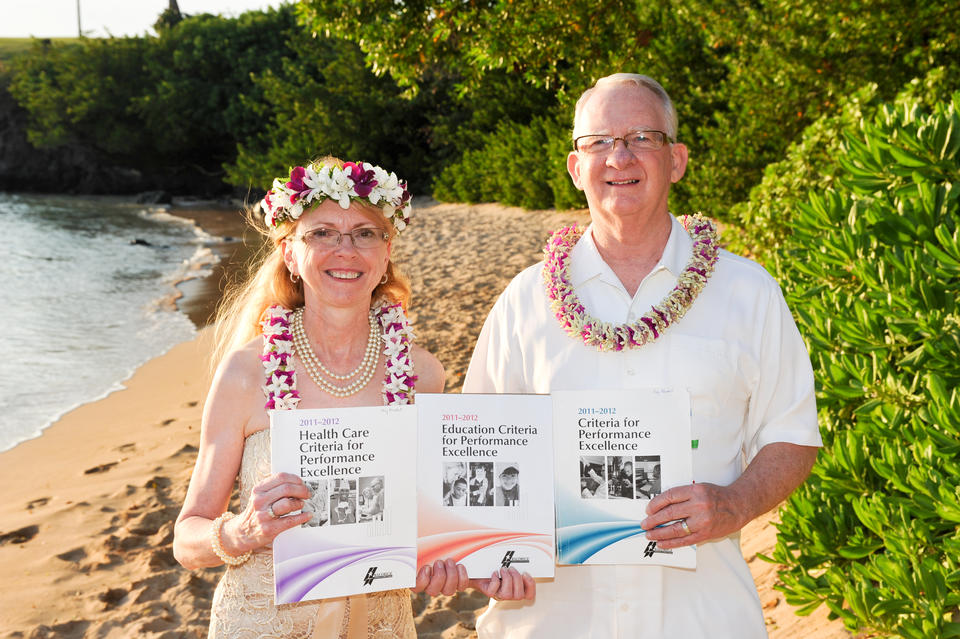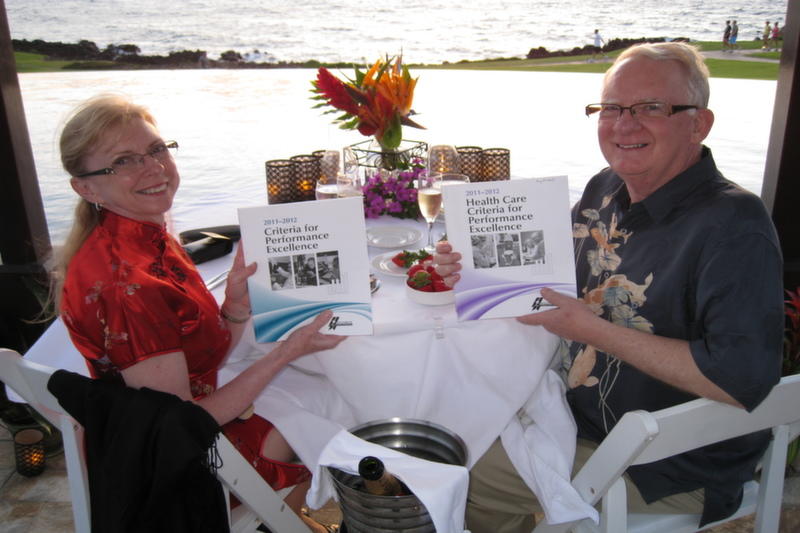Blogrige
The Official Baldrige Blog

Baldrige examiners may be some of the hardest-working volunteers in America.
After being competitively selected each year, Baldrige examiners individually spend up to 40 hours in self-study and group training in the spring. Then, from May to mid-August, those who serve on teams for the Baldrige Award process typically contribute 100 hours each conducting confidential evaluations of organizations’ performance. In the fall, for the final-stage site visits of the award process, examiner teams spend dozens of hours preparing for and then working together for an intense week at the locations of organizations being evaluated for the prestigious Baldrige Award.
What’s more, highly experienced Baldrige examiners also write case studies for use in annual Baldrige training, provide technical reviews of feedback reports for Baldrige Award applicants, and serve as ambassadors for the Baldrige Program by sharing with organizations in varied sectors how to use the Baldrige Excellence Framework (which includes the Criteria for Performance Excellence) to achieve long-term success.
For the latest in a series of interviews of experienced Baldrige examiners, we talked to Kay Kendall, who has performed all of those roles. For example, she led the writing team for the 2017 Arroyo Fresco Community Health Center Case Study and volunteered as a technical editor in several recent years. Before you read the interview, can you guess where these photos were taken (which also feature fellow Baldrige alumni examiner Glenn Bodinson and three sector-specific versions of the Baldrige framework booklet)?

1. Kay, would you please share how you first became interested in becoming a Baldrige examiner?
I was working for AlliedSignal (now Honeywell), and our chief quality officer, Jim Sierk, had come from Xerox, where he had led the company’s Baldrige Award-winning application project. I was in his first class of "internal" Baldrige examiner training, and I was instantly smitten. The framework with all of the questions appealed to me because they were so comprehensive and really required thoughtful analysis without being prescriptive. After that, I wanted to become a “real” Baldrige examiner. It took a few applications and serving as an examiner with a state [Baldrige-based] program before I was accepted.
2. What were your impressions and highlights of your first training (the Examiner Preparation Course)? What have been highlights for you of annual examiner training in subsequent years?
Back in those days, we did a round of introductions of everyone in the Green Auditorium [at the National Institute of Standards and Technology, which houses the Baldrige Performance Excellence Program]. I was sitting toward the back of the room, and I kept getting more and more nervous as people introduced themselves and shared their experience. I felt like I had been selected by mistake!
But I loved the training—so many bright, enthusiastic people to learn from. I still feel that way, only now it feels like a reunion seeing so many of my friends that I've made through the years working with the Baldrige Program. I'm still in touch with friends from my first year as a national examiner!
3. Would you please share some memorable learning experiences you’ve had as an examiner on Consensus Review teams (the second phase of the annual Baldrige Award process)?
What has always impressed me about the consensus process is how well it really works, especially conducted over the phone. Over the years it's become more structured, which has allowed the calls to be more productive and less like the "marathon" sessions we had in the old days. I also find the different perspectives expressed by fellow examiners so helpful in challenging some of my own preconceived ideas. I don't think that I've ever participated in a Baldrige consensus process where I didn't have at least one major "ah-ha" moment.
4. Similarly, would you please share some memorable learning experiences you’ve had as an examiner on a site visit (the third and final phase of the award process)?
I have been fortunate to participate in seven Baldrige site visits. Most became Baldrige Award recipients in the year of the site visit I was on or in subsequent years. Being able to see organizations of all different sizes and in different sectors apply the Baldrige Criteria in their own ways to achieve excellence is inspiring and energizing. I have an MBA, and I can honestly say that I have learned more about leadership, organizational dynamics, customer focus, and employee engagement from my site visit experiences than I did in my graduate coursework.
5. How have you applied learning from your service as a Baldrige examiner to your work through the years?
When I worked in corporate America, I never had the good fortune to work in organizations that were interested in using the Baldrige Criteria for Performance Excellence as a business framework or applying for the Baldrige Award. However, I had the framework in my head, and I referenced it constantly to analyze situations and apply best practices. I called it doing “Stealth Baldrige.”
However, since I became a consultant in 2009, I’ve been able to use my service as a Baldrige examiner to help clients better understand the Baldrige Criteria, improve their processes, and tell their stories in their applications. I’ve been pleased to see these organizations really embrace the framework as the way to do business; they don't see it as something separate or “on the side.”
6. How do your colleagues/family/friends view your service as a Baldrige examiner?
My husband, Glenn, and I became friends many years ago through working together on a project to promote the Baldrige Program, ASQ, and the Alliance for Performance Excellence [the nonprofit network of state-level and regional Baldrige-based award programs]. We now work together in our consulting practice. Sometimes we laugh and say that it’s a good thing we both continue to serve in the Baldrige Program and use the Baldrige Criteria in our practice because no one else would really understand what we do and how passionate we are about it.
7. Now, would you please reveal the location depicted in your photo with the Baldrige framework booklet?
Kapalua Beach on Maui [in Hawaii].
The photo was taken right after our wedding on May 21, 2012. We took it to thank Harry Hertz [director emeritus of the Baldrige Program] for writing “Item 3.3, Spousal Engagement” for us as a wedding present.
Enrich Your Career and Improve Organizational Performance

Become a Baldrige Examiner
If you are looking for a one-of-a-kind professional development and networking opportunity, and the chance to make a meaningful contribution to organizational improvement and U.S. competitiveness, apply to serve as a volunteer on the Baldrige Board of Examiners.
Apply Online Today
The 2018 Board of Examiner Application will be open until January 8, 2018, 6:00 pm ET.







Nice Kay. Appreciate having you in the tribe!